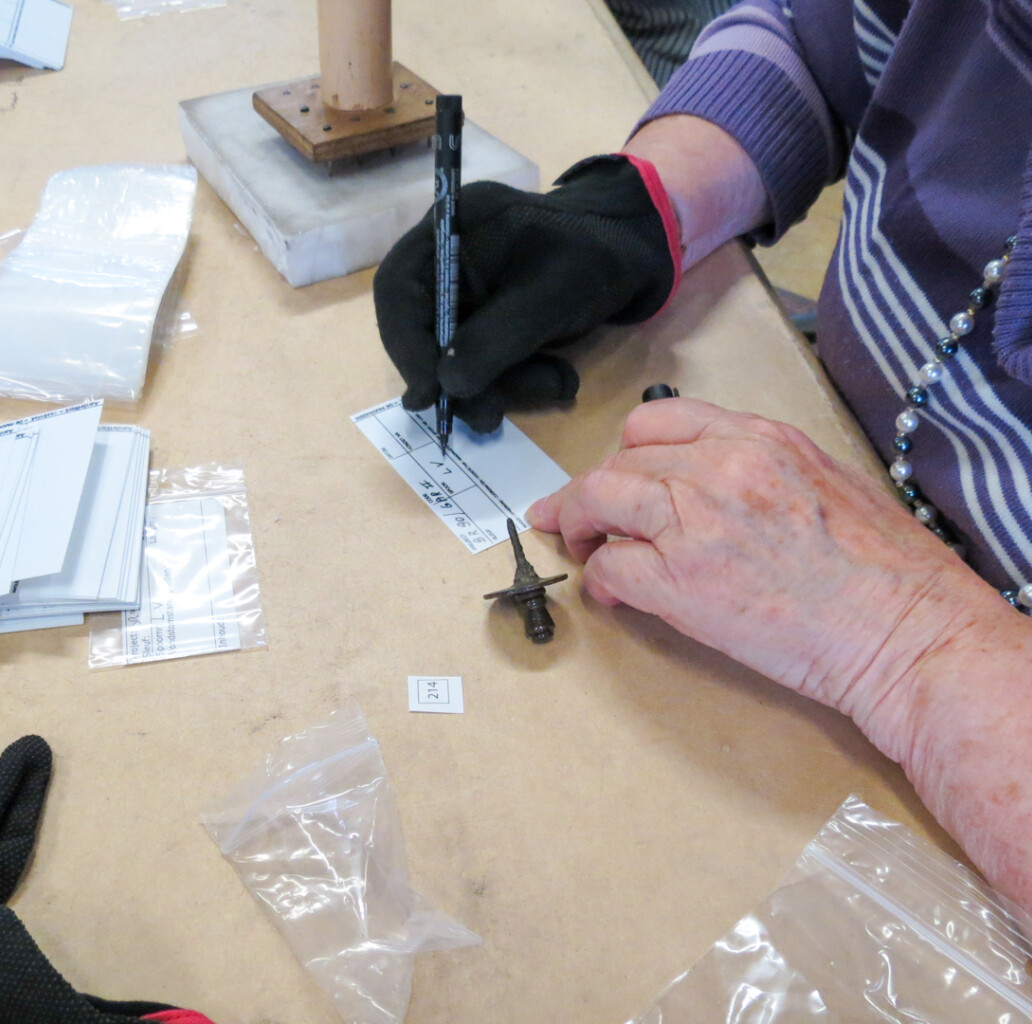How do you move a gigantic archaeological collection?

Our colleagues at Raakvlak are also hard at work preparing to relocate the entire archaeological collection to the Heritage Factory. What exactly does this collection include, and how has it taken shape over the years? You can read all about it in this relocation blog.
Archaeological ensembles
With the construction of the new Heritage Factory and BRUSK, we will be moving all our collections to new, state-of-the-art storage facilities over the next five years – a move that requires extensive preparation. In this relocation blog we’ve already introduced several Musea Brugge collections, including the applied arts and ethnography collections. But the Raakvlak archaeological collection, the Intermunicipal Immovable Heritage Service for Bruges and its environs, will soon be moving to the Heritage Factory as well.
This archaeological collection includes, among other things, the finds made by Raakvlak’s archaeologists during their excavations, as well as the excavation records – think photos, plans, drawings, daily reports. Together, we call these archaeological ensembles. It is important that all excavation records are kept in the same place as the finds.

Preparing for the move
Raakvlak’s core task is to manage and preserve all these archaeological ensembles in a high-quality, sustainable and permanent manner.
Ahead of the move, we are re-packing all our 'older finds' according to current needs and standards. In the past, all categories of finds (glass, bone, metal, ceramics...) would end up together in a single box; now they are separated by category. Metal objects, for example, are packed per site and per context in perforated bags and stored in an airtight box with silica gel.
Until the move, we store the boxes in an environment with a stable (or slowly fluctuating) temperature of 18-20°C, without (UV)light. For each object, we write the information with an archival pen on an acid-free, tear-resistant and waterproof card. It’s pretty intensive work, but fortunately we can count on the help of nine regular volunteers.
This re-packing process also brings many remarkable objects to light (again). It’s the perfect opportunity to conserve items where necessary and to make a selection accessible via Raakvlak’s depot website. Be sure to take a look.



Back in time: The origins of our archaeological collection
In total, we are moving around 10,000 boxes from the Warehouses on the Komvest, where the collection is currently housed, to the new Heritage Factory.

Our collection is highly diverse: from prehistory to just after the Second World War. The majority of the finds in the archaeological collection were assembled by Raakvlak and its predecessors. These finds are the result of archaeological research carried out during public-works projects on municipal land or on sites belonging to the City of Bruges, and, since 2004, also in the Bruges environs. During groundwork in King Albert I Park, for example, we recently discovered remains of wooden frameworks and no fewer than 241 cloth seals. Important archaeological evidence of Bruges’s thriving cloth industry.
A smaller part of the archaeological collection consists of so-called old archaeological ensembles. That is everything that was gathered before the Municipal Archaeological Service of Bruges was established in 1977. Our repository goes back to 1865 when the Société Archéologique de Bruges (Oudheidkundig Genootschap van Brugge) was founded. Among its twelve founding members were James Weale – an important British-Belgian art historian - and the priest-poet Guido Gezelle. This society brought together a rich collection of sculptures, furniture and textiles, but also numerous archaeological objects from various find spots spread across time and space. Today, this collection is known as the Gruuthuse Collection. Its archaeological component is preserved in Raakvlak’s storage facilities.



